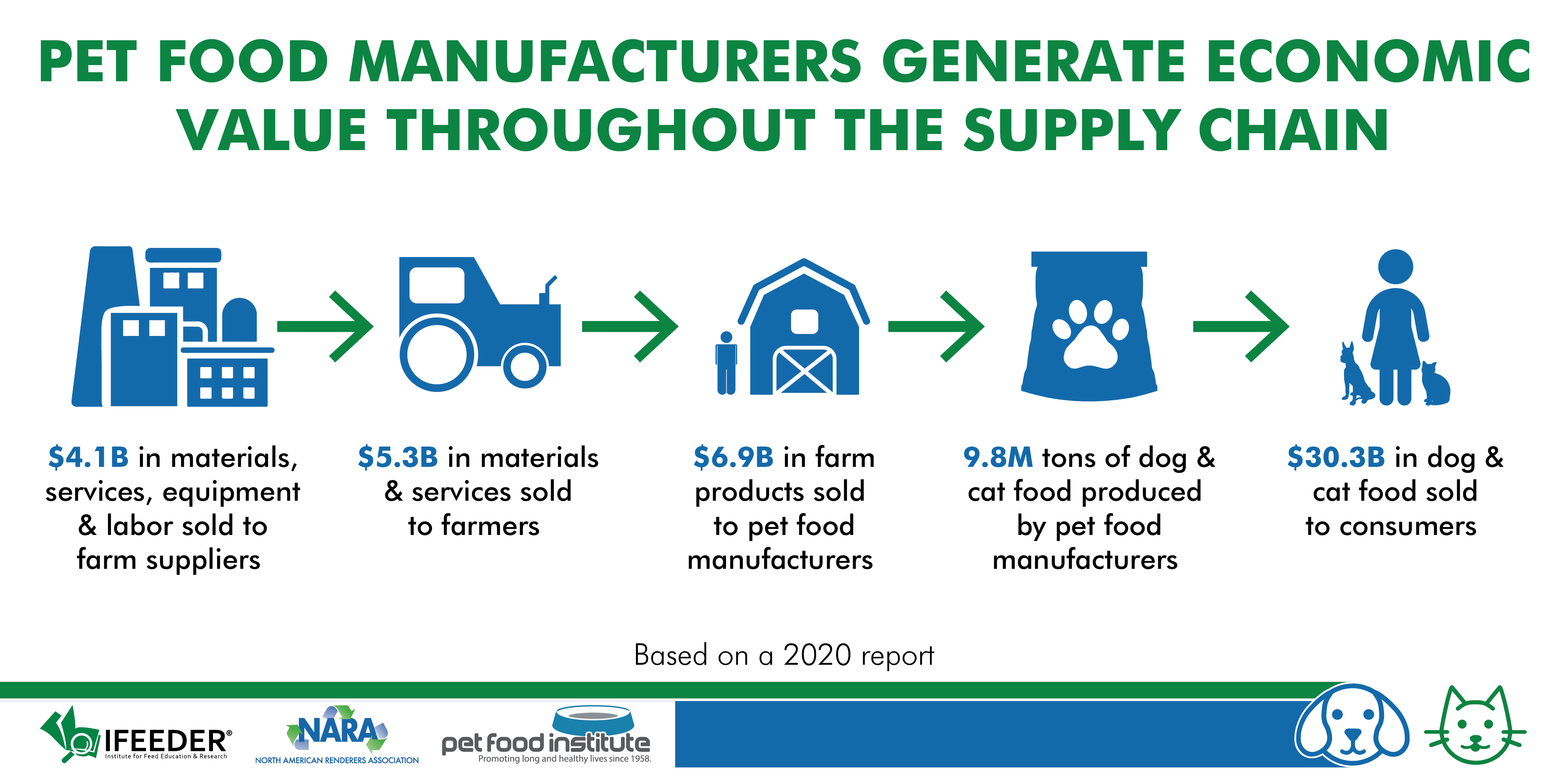U.S. Pet Food Makers Feed Pets and Rural Economies
Research finds that U.S. pet food makers use approximately 8.65 million tons of animal- and plant-based ingredients to provide the complete nutrition that cats and dogs need to enjoy long and healthy lives. Nutritionally balanced and safe pet food is produced at manufacturing facilities across the country, and new research shows this is doing more than feeding pets. Pet food is also providing economic contribution to the agricultural and rural economies.

Pet Food and American Agriculture: A Strong Partnership
A recent report commissioned by the Institute for Feed Education and Research (IFEEDER) North American Renderers Association (NARA) and the Pet Food Institute (PFI) finds that pet food makers purchase $6.9 billion in crops, livestock and poultry products grown and raised by farmers and ranchers, providing local economic contribution.
In turn, farmers and ranchers purchase roughly $5.3 billion in materials and services from farm suppliers, who purchase roughly $4.1 billion in inputs from other industries.
The Wide Range of Ingredients Used in Pet Food
Pet food manufacturers use roughly 8.65 million tons of animal- and plant-based ingredients. Research also found more than 500 ingredients used in dog and cat food, demonstrating the diversity of options available to shoppers at various price points to fit their budgets.
A Commitment to Sustainability
Pet food makers are committed to continuously working to improve sustainability efforts. Leftover ingredients made from the production of human food, such as bakery or brewery items, or parts of the animal that humans don’t eat, are often used in producing complete and balanced pet food. This helps to prevent food waste and reduce agriculture’s environmental footprint.
Read the Full Report to Learn More
With over two-thirds of U.S. households owning a pet and more than $30 billion in pet food sales annually, the IFEEDER, NARA and PFI came together to better understand what goes into the production of pet food. Download the entire report to learn more.



